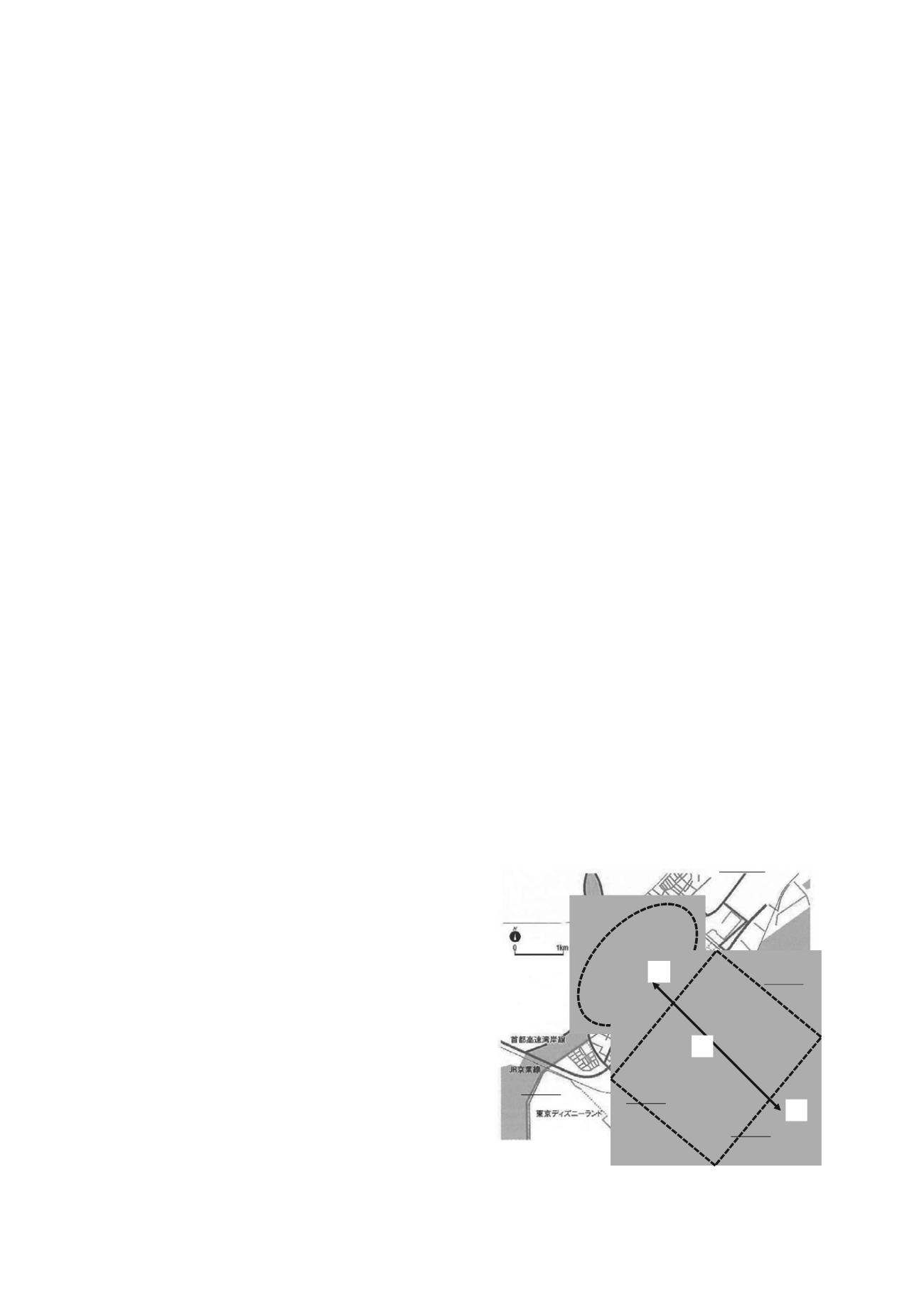
1419
Dependency of nonuniform ground surface liquefaction damage on organization
and slope of deep strata
Non-uniformité des dommages de liquéfaction de la couche de surface due à la configuration
des strates profondes et de l'inclinaison des strates
Asaoka A.
Association for the Development of Earthquake Prediction, Japan
Nakai K.
Nagoya University, Japan
ABSTRACT: Urayasu City, Japan, experienced heavy liquefaction damage due to the Great East Japan Earthquake, and the damage
was characteristically nonuniform and varied widely depending on the location. Variation in the level of liquefaction damage is often
explained by factors such as whether ground improvement had been carried out or not and differences in the dates of reclamation. In
the current study, elasto-plastic seismic response analysis of multi-layered ground was carried out using the results of ground surveys
in Urayasu City and focusing attention on the existence of clay deposits deep in the liquefied ground and on their slanted geometry.
The analysis showed that the existence of clay layer deposits at locations deeper than the liquefied layers caused amplification of the
seismic wave in the somewhat long-period ranges, leading to large plastic strains sufficient to cause liquefaction even in intermediate
soils that are usually considered to be resistant to liquefaction. In addition, it was shown that because of the existence of the sloped
boundaries in the deep part of the ground, localized shear deformation became prominent in the inclined strata and caused nonuniform
liquefaction to occur in the ground.
RÉSUMÉ: De graves dommages de liquéfaction ont été causés par le séisme océanique Tohoku-Pacifique dans la ville de Urayasu.
L'ampleur des dommages de liquéfaction est spatialement non-uniforme et ses variations sont très irrégulières. La variation des
dommages est souvent expliquée comme due à la présence d'amélioration des couches ou à la différence d'âge des polders. Dans cet
article nous avons effectué une analyse de la réponse sismique elasto plastique des systèmes multicouches sur la base des résultats de
l'analyse du terrain de Urayasu, en nous concentrant sur la présence de dépôts d'argile sur les parties profondes des strates liquéfiées et
sur l'inclinaison de celles-ci. Le résultat montre qu'il est possible d'observer une liquéfaction des sols intermédiaires difficilement
liquéfiables, suite à une déformation plastique due à une amplification de l'onde sismique dans la gamme des périodes longues lors de
la présence d'argile déposée sur les couches plus profondes que les couches liquéfiées. En outre, la présence d'une limite inclinée en
profondeur a montré que la déformation locale de cisaillement dans la partie inclinée prédomine, et que la liquéfaction se produit dans
le sol de manière non uniforme.
KEYWORDS: liquefaction, stratum organization, stratum slope
1 INTRODUCTION
The 2011 off the Pacific coast of Tohoku Earthquake caused
liquefaction to occur in reclaimed lands in Urayasu City and in
other wide areas of reclaimed land along Tokyo Bay. Such
liquefaction damage observed in the Kanto Region exhibited the
following characteristics.
1) Extensive liquefaction damage occurred even though these
areas were far away from the epicenter and the seismic intensity
was only about 5 (the maximum acceleration in these areas was
between 100 to 200 gal according to K-net and other ground
acceleration measurement records).
2) Grain size distributions of samples taken in the vicinity of the
areas where liquefaction occurred showed the amount of fine
fraction to be large, although it had been considered hitherto that
grounds with large fine fraction content are not easily liquefied.
3) The level of liquefaction damage was nonuniform spatially,
and the variation in the damage levels was large.
Site survey and aerial photography data were used to produce
Fig. 1, which illustrates the areas in Urayasu City where
liquefaction damage was observed and those where such
damage was not observed. The figure also indicates dates of
reclamation work. Although liquefaction damage occurred over
wide areas in the city, most of the damage is concentrated in
relatively new reclaimed lands in a region between the city
center and the southwest part of the city. In contrast, almost no
damage occurred in the older land in the northwest part of the
city. Newspaper and TV reports have attributed the extensive
damage that occurred to the long durations of the tremors, and
the difference in damage levels in various parts of Urayasu City
has often been explained by the presence/absence of past
Until 1970
A
C
B
Before 1945
Until 1968
After 1970
Until 1966
Liquefied
Not Liquefied
Figure 1. History of reclamation work in Urayasu City and distribution
of liquefaction damage caused by the Great East Japan Earthquake (add
and modified Nikkei Construction 2011)


